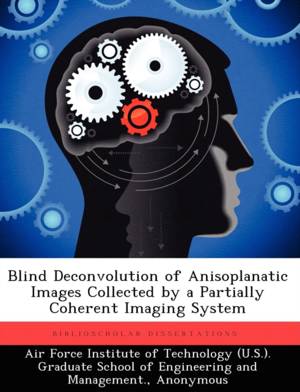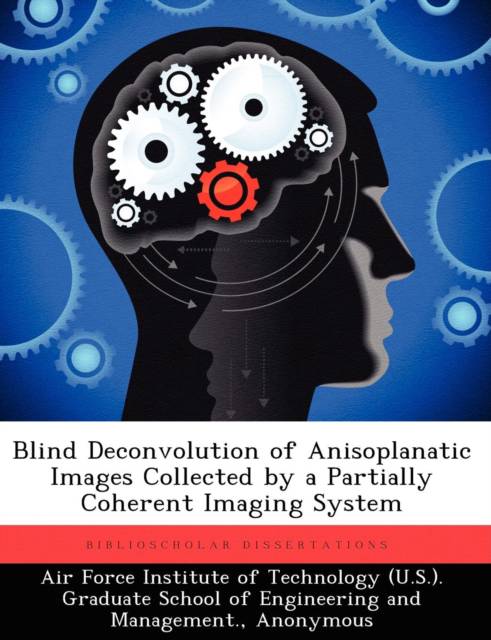
- Retrait gratuit dans votre magasin Club
- 7.000.000 titres dans notre catalogue
- Payer en toute sécurité
- Toujours un magasin près de chez vous
- Retrait gratuit dans votre magasin Club
- 7.000.0000 titres dans notre catalogue
- Payer en toute sécurité
- Toujours un magasin près de chez vous
Blind Deconvolution of Anisoplanatic Images Collected by a Partially Coherent Imaging System
Adam MacDonald
Livre broché | Anglais
54,45 €
+ 108 points
Description
Coherent imaging systems offer unique benefits to system operators in terms of resolving power, range gating, selective illumination and utility for applications where passively illuminated targets have limited emissivity or reflectivity. In contrast to incoherent imaging systems, partially coherent illumination causes difficulty during image processing due to high levels of image speckle caused by constructive and de- structive interference effects unique to the highly coherent illumination source. Image speckle is caused by the random phase delays that occur due to target roughness and the turbulent atmosphere between the remote target and optical system. To combat such effects, a number of short-exposure images are combined by incoherent averaging to arrive at an image that has greatly decreased levels of speckle. Unfortunately, such average images suffer from decreased spatial resolution due to blur resulting from atmospheric distortion. Effective image restoration may be realized by inverse filtering the recovered average image with an optical transfer function that describes the overall optical system and atmospheric turbulence. In cases where it is inconvenient or impossible to measure the parameters of this evolving function, blind deconvolution algorithms may be applied to estimate both the unknown remote scene reflectance, as well as the unknown system transfer function. This research proposes a novel blind deconvolution algorithm that is based on a maximum a posteriori Bayesian estimator constructed upon a physically-based statistical model for the intensity of the partially coherent light at the imaging detector. The estimator is initially constructed using a shift- invariant system model, and is later extended to the case of a shift-variant optical system by the addition of a transfer function term that quantifies optical blur for given field-of-views and atmospheric conditions. The estimators are evaluated using both synthetically generated
imagery,
imagery,
Spécifications
Parties prenantes
- Auteur(s) :
- Editeur:
Contenu
- Nombre de pages :
- 174
- Langue:
- Anglais
Caractéristiques
- EAN:
- 9781249374480
- Date de parution :
- 13-09-12
- Format:
- Livre broché
- Format numérique:
- Trade paperback (VS)
- Dimensions :
- 189 mm x 246 mm
- Poids :
- 322 g

Les avis
Nous publions uniquement les avis qui respectent les conditions requises. Consultez nos conditions pour les avis.






